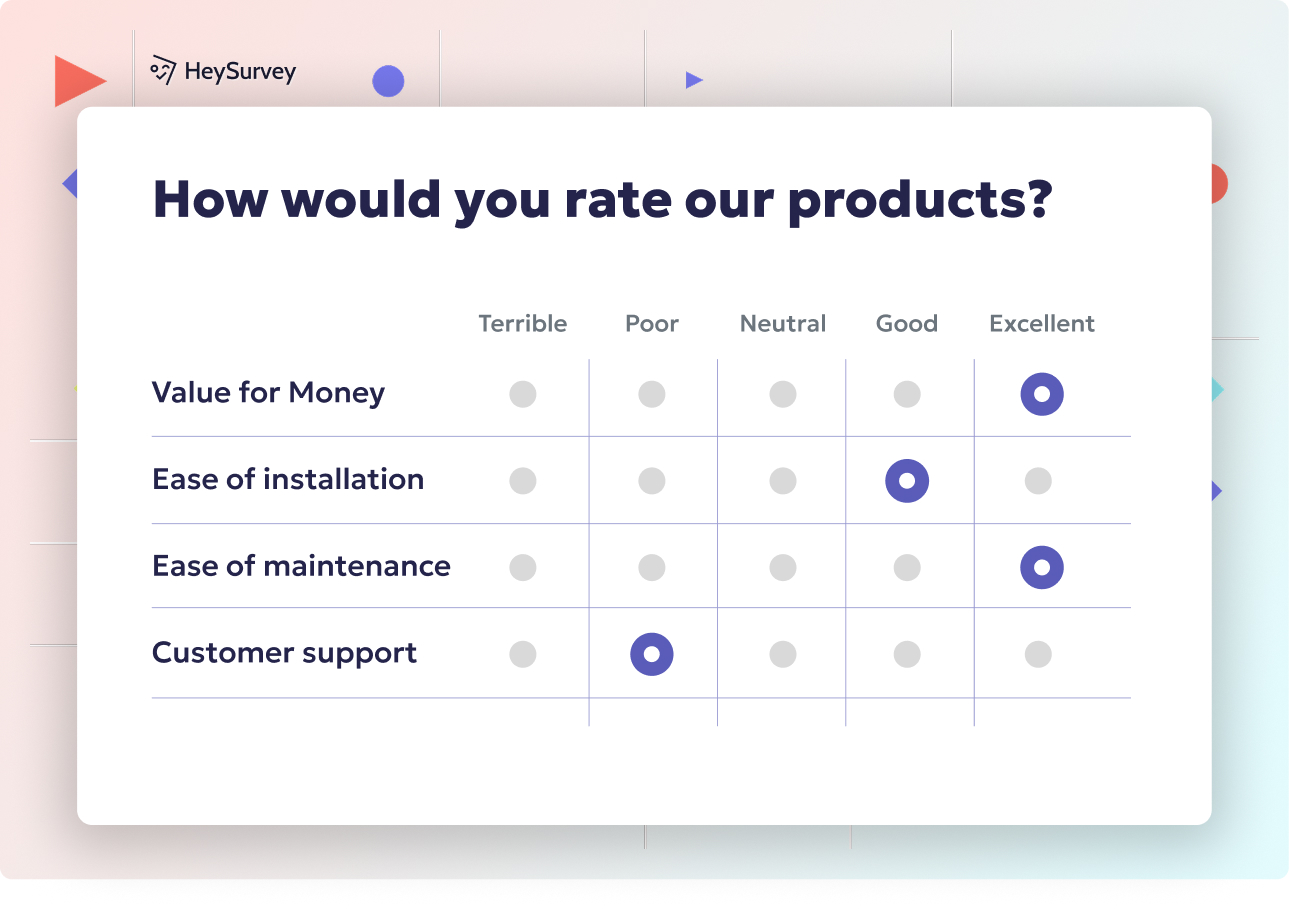31 Happiness Survey Questions: Types, Uses & Proven Examples
Explore 27 proven happiness survey questions across types to measure happiness, improve well-being, and boost satisfaction effectively.
Happiness. It’s one of those things everyone wants but can feel as slippery as soap. So, how do you measure happiness—yours, your employees’, or your customers’? Enter the happiness survey! Carefully crafted survey questions let you measure well-being, capture satisfaction, and fuel smarter decisions everywhere from classrooms to boardrooms. Asking the right questions can drive better productivity, increase retention, and improve employee or customer satisfaction for organizations. For people, it shines a light on mental health and personal growth, making continuous improvement a cheerful reality.
Likert Scale Happiness Survey
Overview
The Likert scale survey is king when it comes to measuring feelings on a gradient. This classic format uses 5-point or 7-point responses, letting people move beyond yes or no and show exactly how satisfied or happy they feel. Its strength is turning those messy, subjective emotions into clear, quantifiable data.
People love ticking boxes, and Likert scales make it easy to see how happiness changes over time or between groups. This data gets you more than just a hunch—it gives you benchmarks and trends you can act on. And because so many people use the Likert method, your results are statistically solid and easy to report.
Why Use This Type
If you want to benchmark overall sentiment and spot trends in happiness, the Likert scale is your trusty sidekick. It makes it simple to turn individual opinions into group insights for dashboards, year-over-year reports, or comparing teams.
Organizations value this approach because:
- It’s statistically robust for group comparisons or tracking change.
- You can easily spot trends at a glance.
- It’s flexible for any topic, from work-life balance to optimism.
When to Use This Type
Bring out the Likert scales for the big moments—annual culture audits, major program changes, or large-scale research studies. They work best when you’ve got lots of people to survey or need data you’ll track over time.
Common scenarios include:
- Annual or biannual employee or student culture audits.
- Pre- and post-intervention surveys to measure impact.
- Population-wide sentiment studies—think big research or organization-wide efforts.
Sample Questions
On a scale of 1–7, how satisfied are you with your life right now?
I feel optimistic about my future.
I regularly experience positive emotions.
I have the freedom to do what I enjoy most days.
I feel my daily activities are meaningful.
The Subjective Happiness Scale (SHS), a 4-item 7-point Likert scale, effectively measures individuals' global subjective happiness. (pmc.ncbi.nlm.nih.gov)
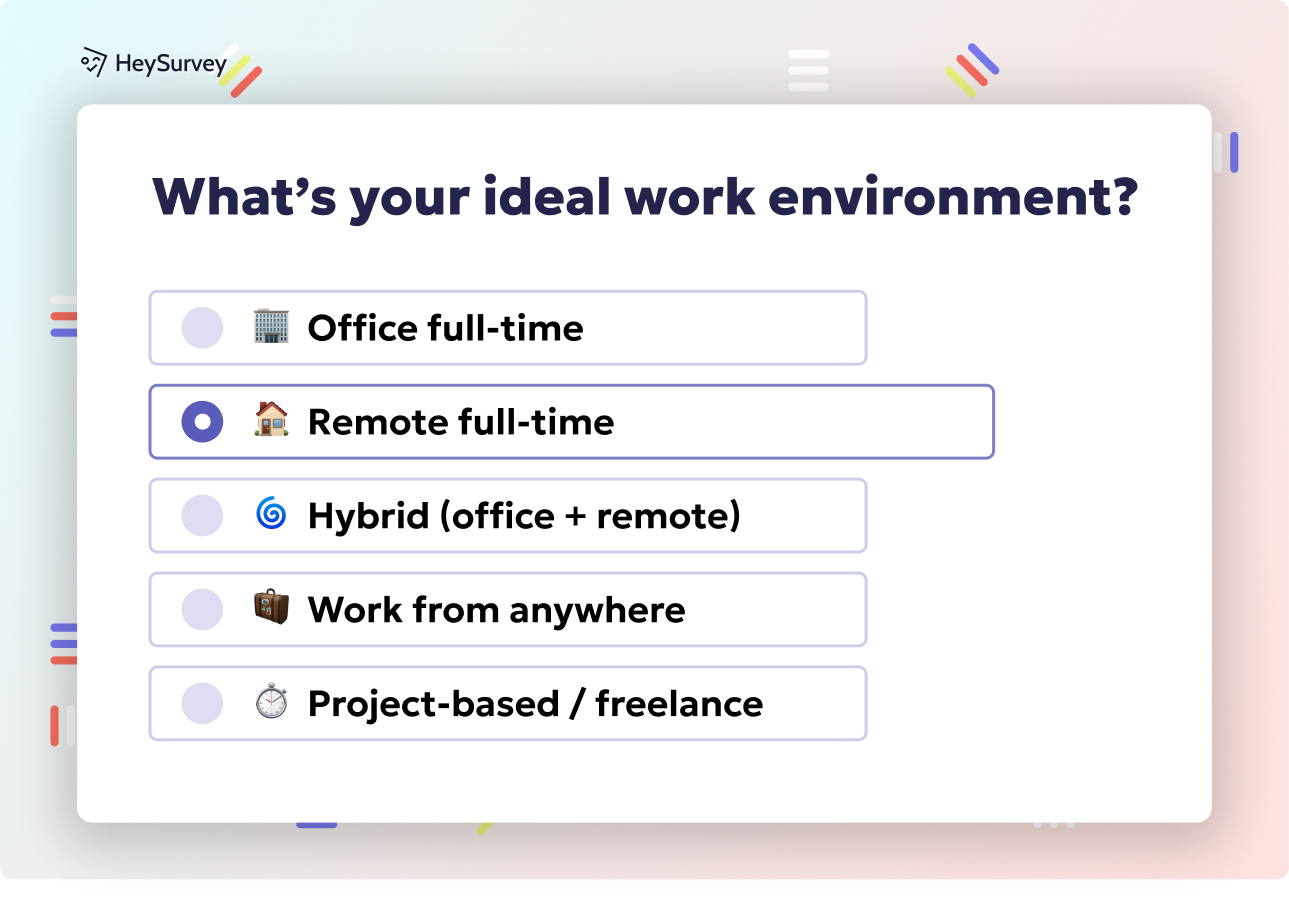
How to Create Your Happiness Survey with HeySurvey in 3 Easy Steps
Ready to measure happiness the smart way? HeySurvey makes it slick and simple—even if you’re totally new to surveys. Just follow these three steps to get your happiness survey up and running quickly.
Step 1: Create a New Survey
- Head over to HeySurvey and click “Create New Survey”.
- Choose whether to start from scratch with an Empty Sheet or pick a Pre-built Template designed for happiness surveys.
- Give your survey a name that makes sense, like “Employee Happiness Check” or “Customer Smile Meter.”
- Hit Create to open the Survey Editor where you’ll build your masterpiece.
Step 2: Add Happiness Questions
- Click on Add Question to insert the type of happiness questions you need (e.g., Scale for Likert questions, Choice for multiple-answers).
- Type in your questions—remember, clear and positive language wins hearts!
- Customize each question: set if it’s required, add descriptions, or upload images for extra flair.
- Use the handy options to reorder questions or duplicate them to save time.
- For branching surveys, you can define what question comes next based on responses, tailoring the journey for each participant.
Step 3: Publish Your Survey
- Once you’re happy with the questions, click Preview to see how your survey feels from a respondent’s view.
- Adjust colors, fonts, and layouts via the Designer Sidebar if you want to add your style.
- When everything looks good, hit Publish. You’ll get a shareable link to send out or embed wherever you want feedback.
- Remember, you’ll need an account to publish and track responses, so sign up or log in if you haven’t already.
Bonus Steps: Make It Yours and More Powerful
- Apply Branding: Upload your company or event logo to make the survey unmistakably yours. Customize colors and fonts to match your brand vibe.
- Define Settings: Choose start/end dates, set response limits, or add a redirect URL for when people finish the survey. You can also let respondents view results for certain questions—super engaging!
- Branching & Skip Logic: Create smart pathways where questions change based on previous answers. This keeps surveys relevant and respect respondents’ time, skipping questions that don’t apply.
Feeling ready? Go ahead and open a happiness survey template below to get started instantly!
Employee Happiness Pulse Survey
Overview
Employee happiness pulse surveys are short, recurring check-ins—think of them as a workplace happiness “thermometer.” Instead of waiting a whole year for feedback, you get real-time snapshots of the team’s mood and engagement, catching trends as they happen.
These quick surveys typically use 5–10 questions, making them easy to complete and easy to analyze. Delivered via email or HR software, they’re the go-to tool for proactive people leaders.
Why Use This Type
Pulse surveys are perfect if you want to detect early signs of burnout or disengagement. They help managers respond quickly instead of playing catch-up after folks start heading for the exit.
Benefits include:
- Boosting engagement by acting on trends as they appear.
- Helping you reduce turnover by solving problems early.
- Creating a routine, two-way dialogue between teams and their leaders.
When to Use This Type
Pulses are at their best when you need to keep a close eye on employee well-being. Monthly, quarterly, or even weekly, they’re your early warning for workplace happiness.
Use them:
- Monthly or quarterly for routine check-ins.
- After big organizational changes, like reorgs or mergers.
- During high-stress seasons—think holidays or crunch times.
Sample Questions
How happy were you at work this week?
Do you feel recognized for your contributions?
How manageable is your current workload?
Do you feel connected to your team?
Would you recommend our company as a great place to work?
Regular pulse surveys can enhance employee engagement, with 41% of employees surveyed more than four times a year reporting feeling very engaged. (achievers.com)
Customer Happiness (CSAT/NPS) Survey
Overview
Wondering if your customers are smiling or silently fuming? The Customer Happiness Survey uses proven metrics: the classic CSAT question, the famous NPS 0–10 rating, and follow-up questions to diagnose why people feel the way they do. They keep it simple for fast feedback with plenty of insight.
CSAT (Customer Satisfaction Score) and NPS (Net Promoter Score) have become the gold standards for measuring customer satisfaction and loyalty. Supplemented by open-ended follow-up questions, you get the “what” and the “why” of customer happiness.
Why Use This Type
Customer happiness scores tell you more than just how people feel—they predict future decisions. Happy customers stick around, buy more, and tell their friends. Unhappy ones churn and warn others away.
Here’s why these surveys matter:
- Direct link between happiness and loyalty—they predict if someone will recommend or stay.
- Help you spot and fix issues before they become churn.
- Pinpoint where your customer experience shines or needs a facelift.
When to Use This Type
Perfect for touchpoints where customer emotions run highest—just after a purchase, following a support call, or each quarter for your best accounts.
Deploy customer happiness surveys:
- Immediately post-purchase to capture first impressions.
- After a support interaction to gauge satisfaction.
- During quarterly account reviews for ongoing relationships.
Sample Questions
How satisfied are you with your recent purchase experience?
On a scale of 0–10, how likely are you to recommend us to a friend?
What’s the primary reason for your score?
Did our product meet your expectations for making you feel happier or less stressed?
How could we improve your overall happiness with our service?
Daily Mood Tracking Micro-Survey
Overview
Sometimes, all you need is a pulse—not a novel. Daily mood tracking micro-surveys use a single emoji picker, slider, or a couple of quick prompts to measure real-time mood. These bite-sized surveys fit perfectly into daily routines, often delivered through workplace intranets or mobile wellness apps.
Because they’re short, people actually answer them. Over time, these micro-check-ins build a powerful picture of real-time happiness trends and mood swings.
Why Use This Type
Daily mood surveys work wonders for programs focused on well-being and mental health. They show the ups and downs of real life, not just the highlight reel. Plus, seeing their own mood graphs helps people spot patterns and practice self-care.
Reasons to love this format:
- Captures real-time mood swings before minor slumps become major issues.
- Encourages self-reflection by making happiness visible and trackable.
- Integrates seamlessly into wellness programs or mental health support.
When to Use This Type
Mood trackers are the unsung heroes for companies, coaches, or apps running wellness challenges, therapy supports, or just providing daily care.
Best use cases:
- Daily check-ins for personal reflection or organizational health.
- During wellness challenges to boost motivation.
- For therapy support—tracking progress over time.
Sample Questions
Which emoji best represents your mood right now?
Rate your stress level from 0–10.
What was the highlight of your day?
Did you get enough sleep last night?
How energized do you feel at this moment?
Regular use of daily mood tracking tools, such as the Happiness Diary, is associated with significant increases in self-reported happiness levels. (link.springer.com)
Life Satisfaction & Well-Being Index Survey
Overview
For a big-picture view, life satisfaction & well-being index surveys are the Swiss Army knife. They sweep across multiple domains like health, relationships, finance, and purpose, providing a comprehensive snapshot of overall happiness.
Policymakers, non-profits, or wellness coaches use these surveys to understand underlying causes and craft tailored interventions. It’s like a happiness health check for entire communities.
Why Use This Type
If your mission is to improve well-being on a grander scale, this multi-domain approach is invaluable. It doesn’t just show if people are happy—it clarifies why by connecting life factors to satisfaction scores.
Benefits include:
- Holistic analysis across personal or population well-being.
- Identifying key drivers of happiness for customized solutions.
- Powerful tool for public policy, coaching, or research programs.
When to Use This Type
Perfect when you need more than a happiness hunch. Life satisfaction surveys come out for annual public health reports, deep-dive research, or personal wellness coaching intakes.
Use these:
- For annual public health data collection.
- At the start of a coaching or therapy program.
- In longitudinal studies following well-being through life’s ups and downs.
Sample Questions
How satisfied are you with your physical health?
Do you feel you have supportive relationships?
How secure do you feel about your financial future?
I have a clear sense of purpose in life.
Overall, how happy are you with your standard of living?
Student Happiness & Campus Climate Survey
Overview
Happiness matters just as much in schools as it does in offices! Student happiness and campus climate surveys zoom in on well-being in K-12 or higher education, linking emotions to everything from attendance to academic performance.
These surveys ask about belonging, safety, engagement, and stress, serving up a full portrait of student life—warts and all.
Why Use This Type
The academic world thrives when students are happy and connected. A positive climate boosts retention, reduces absenteeism, and helps everyone learn better, faster, and with more joy.
The perks of this survey type are:
- Strong links between happiness and academic outcomes.
- Early warning for bullying, isolation, or stress.
- Essential data for school improvement plans or student support services.
When to Use This Type
Bring out the campus climate survey when change is in the air—mid-semester, after exams, or when welcoming a new class.
Best times include:
- Mid-semester pulse to catch mood shifts.
- Following major test periods (goodbye finals stress).
- Onboarding for new students to help them settle in.
Sample Questions
I feel safe and accepted at school.
I have at least one adult on campus I can talk to.
School activities make me feel happy and involved.
How stressed do you feel about your coursework?
Overall, how happy are you with your school experience?
Event Happiness Feedback Survey
Overview
With so much planning behind every event, you want to know attendees walked away with a smile! Event happiness feedback surveys provide instant, actionable feedback about delight levels, session highlights, and all the little details that make (or break) a great experience.
Delivered right as people exit or post-session—through kiosks or mobile forms—these surveys are all about catching in-the-moment feelings while memories are fresh.
Why Use This Type
Event organizers and sponsors want to know—did people leave happy, or plotting their escape at intermission? These surveys measure attendee delight and uncover areas for improvement while validating sponsor investments.
Reasons you’ll love this approach:
- Immediate feedback on what’s working.
- Data to prove (or improve!) event ROI.
- Tailored suggestions for future programming and marketing.
When to Use This Type
Get feedback fast—immediately after sessions, as attendees exit, or at virtual event wrap-ups.
Best moments:
- Post-session feedback kiosks.
- At the end of a conference or big event.
- As a wrap-up for live or virtual event platforms.
Sample Questions
How happy are you with today’s event overall?
Which session boosted your mood the most?
Did the event meet your expectations for networking happiness?
Rate the venue’s atmosphere for creating a happy experience.
What would have made you happier at this event?
Best Practices: Dos & Don’ts for Crafting Effective Happiness Survey Questions
Crafting the perfect happiness survey is part art, part science. The best happiness survey practices start with keeping your language clear, positive, and culturally sensitive. This helps everyone feel comfortable and ensures you get authentic responses.
Balance is important. Mix quantitative questions (scales, sliders, numbers) with open-ended prompts for richer insight. You’ll get both clear data and the colorful “why” behind the numbers.
You should:
- Pilot-test your questions to ensure they’re fair and unbiased.
- Keep your wording simple and free from complex jargon.
- Use neutral, inviting language so everyone feels welcome.
You should avoid:
- Double-barreled questions like, “How happy and productive are you today?”
- Leading or biased phrasing (“How much did our amazing service make you happier?”)
- Over-surveying—too many surveys tank engagement. Stick to a sensible cadence that fits your goals.
Careful question design, frequent testing, and thoughtful timing will help you create happiness surveys that people actually want to answer—and that deliver the insights you need to make life happier for everyone.
Conclusion
Happiness surveys are your secret weapon for making people, workplaces, and events even better. Remember to close the loop by sharing what you learn—and turning feedback into action. The right survey method lets you measure, improve, and celebrate well-being wherever you go. Why wait? Start measuring happiness today and see just how bright the future can be!
Related Feedback Survey Surveys
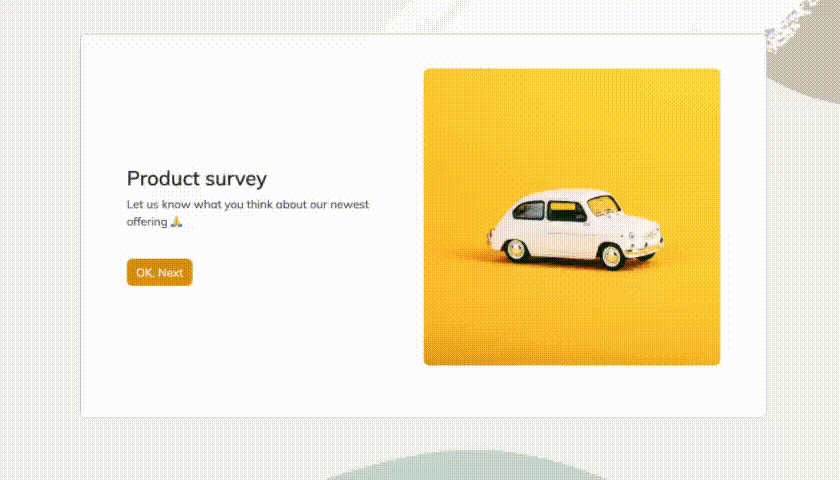
25 Catering Survey Questions to Collect Actionable Feedback
Discover 30 expert catering survey questions to gather actionable feedback that enhances menus, s...
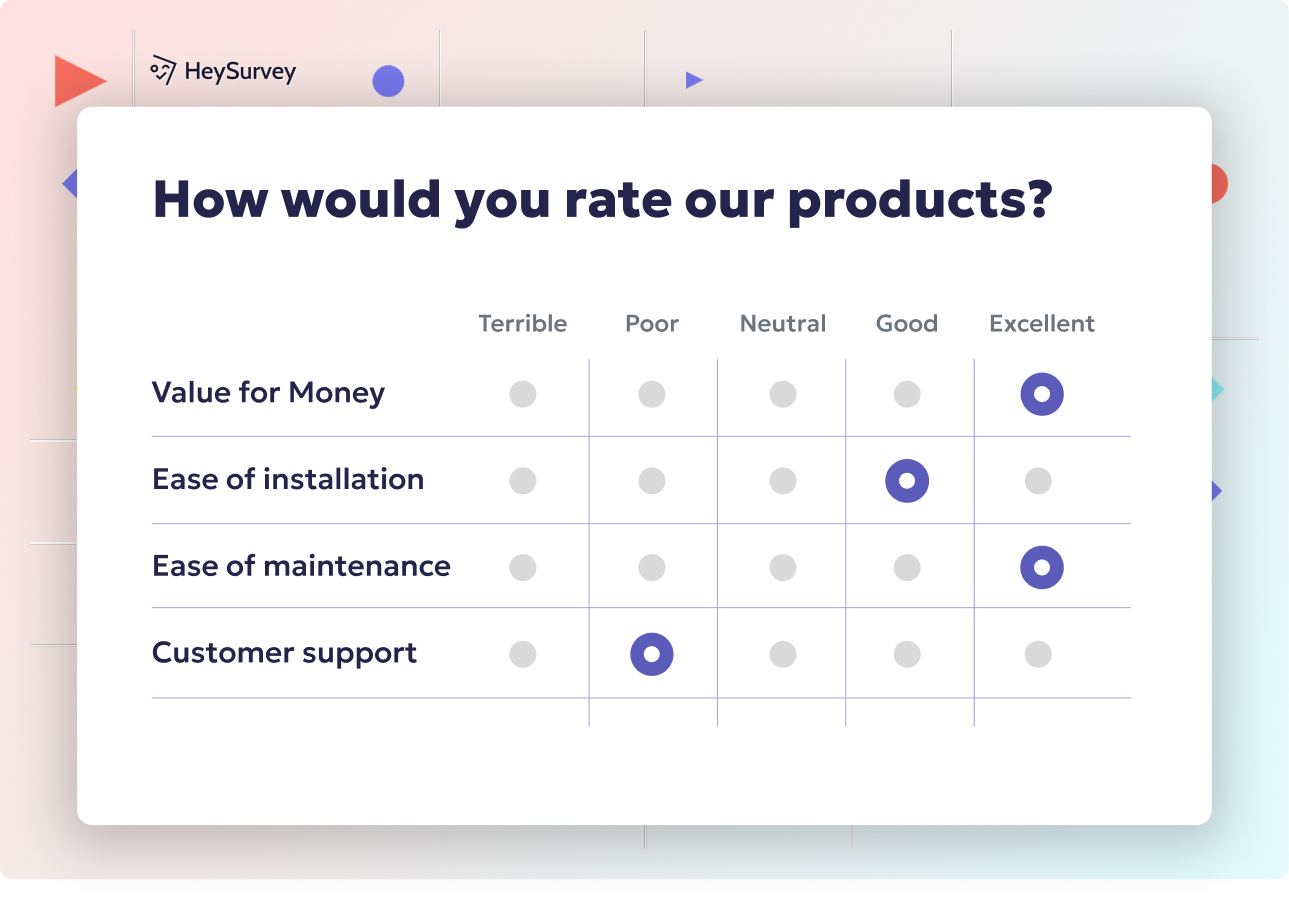
30 User Feedback Survey Questions for Better Insights
Discover 40+ user feedback survey questions across 8 types to boost product insights, UX, and cus...
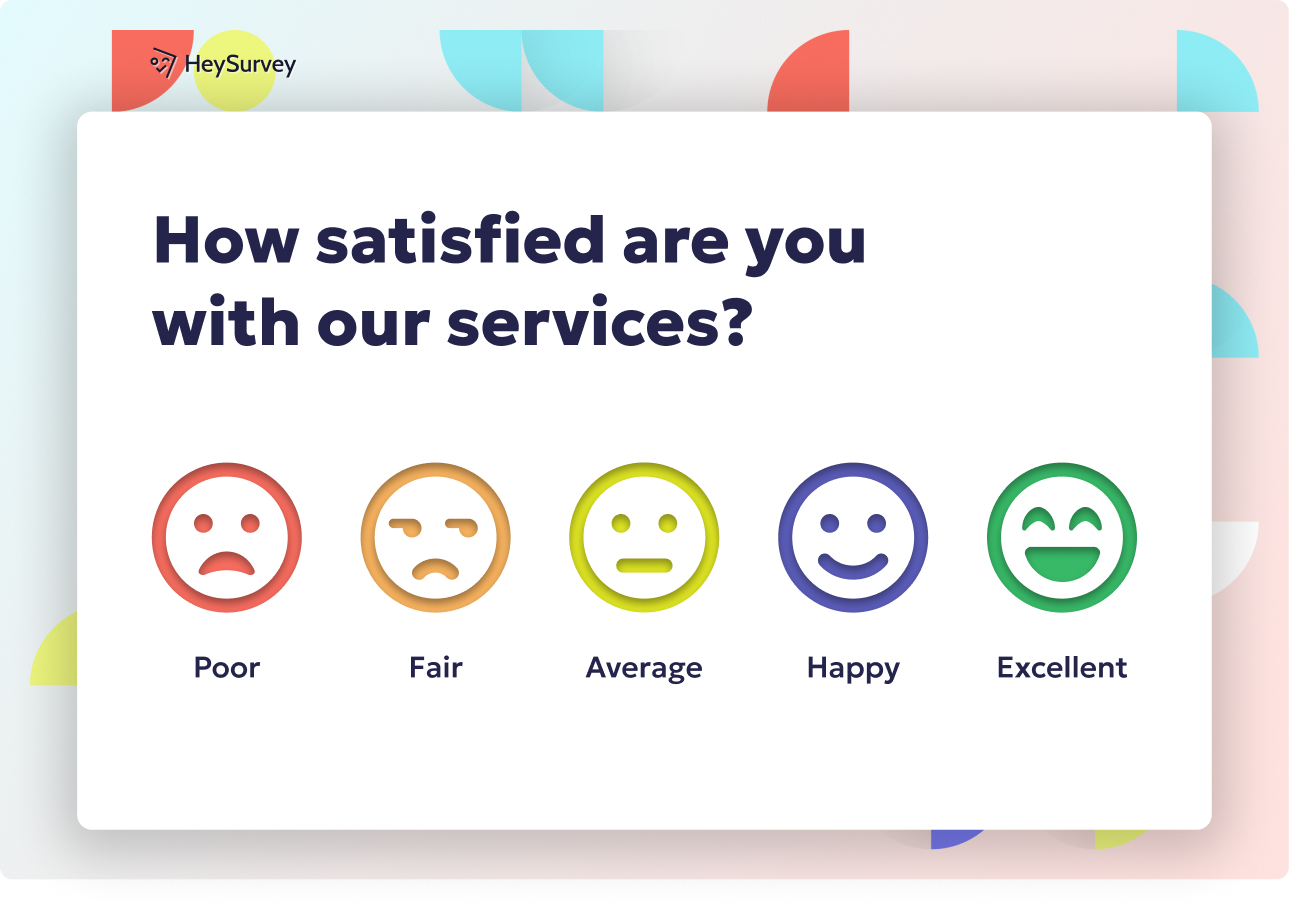
30+ Environment Survey Questions for Sustainable Insights
Explore 30+ environment survey questions with expert tips covering awareness, behavior, corporate...
